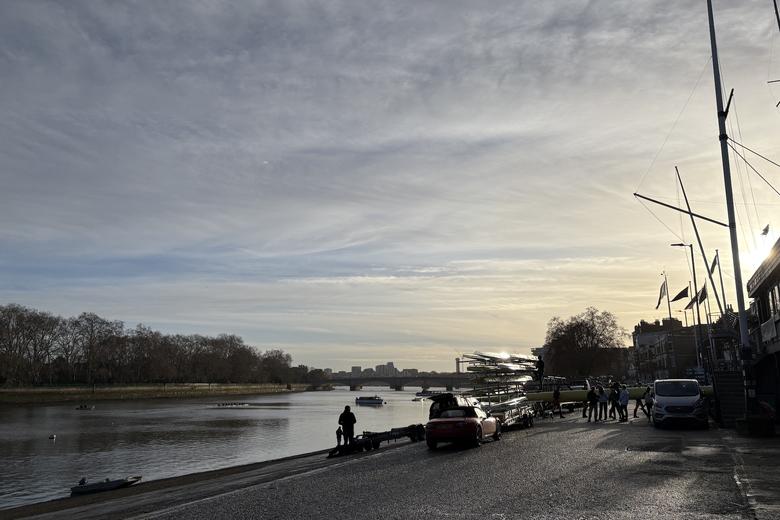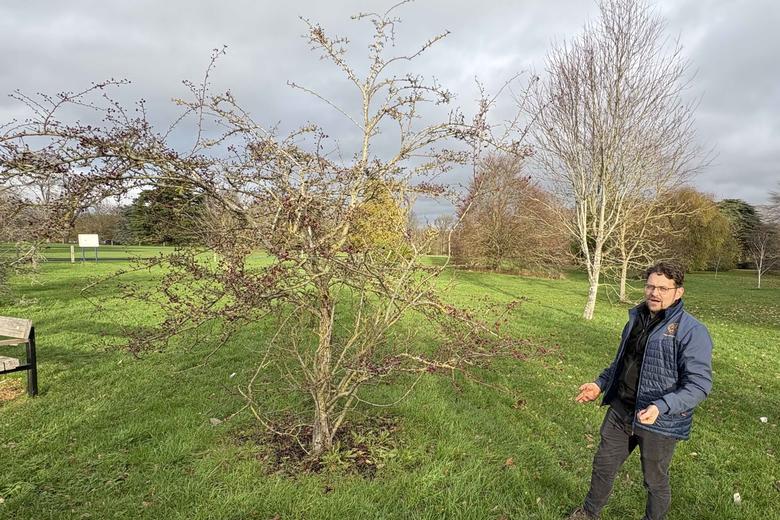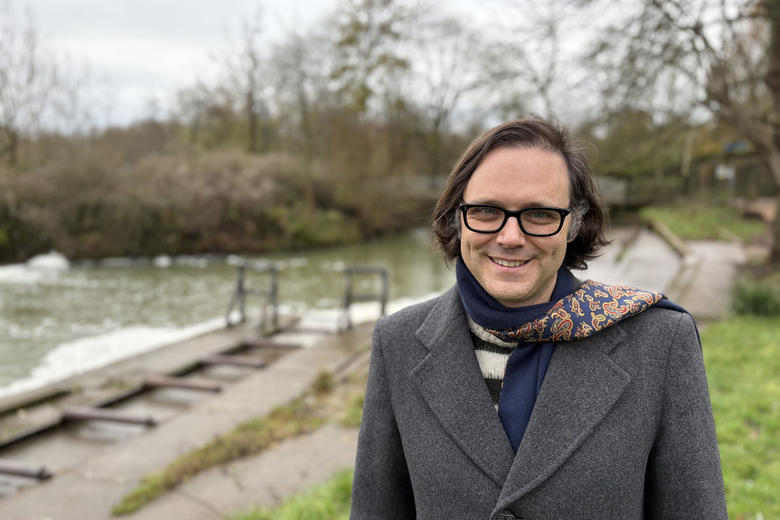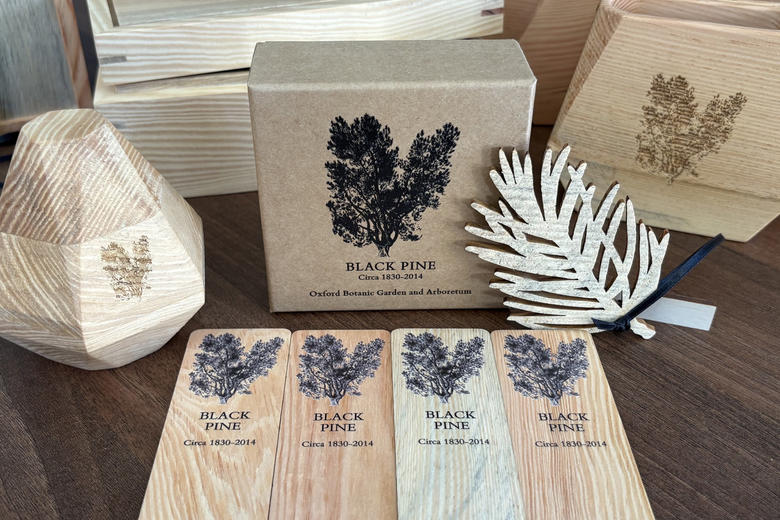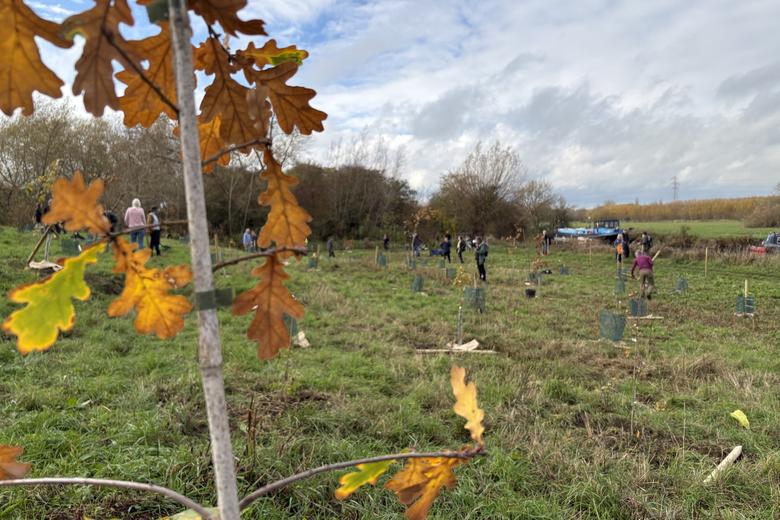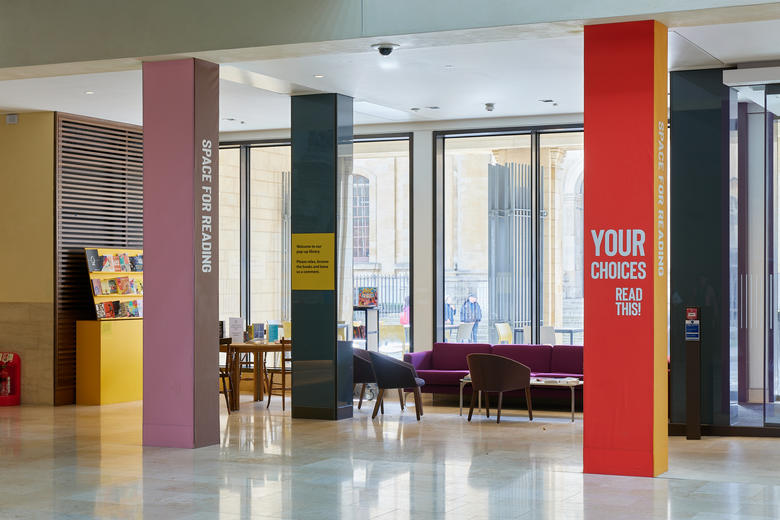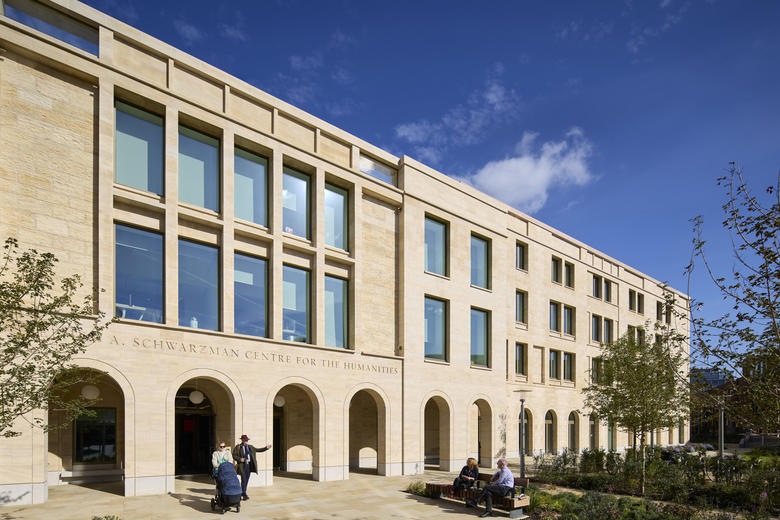OXFORD UNIVERSITY’S TREE MAN

OXFORD UNIVERSITY’S TREE MAN
Sam Prior discusses his role as arboricultural manager for the University
Published: 13 June 2025
Author: Richard Lofthouse
Share this article
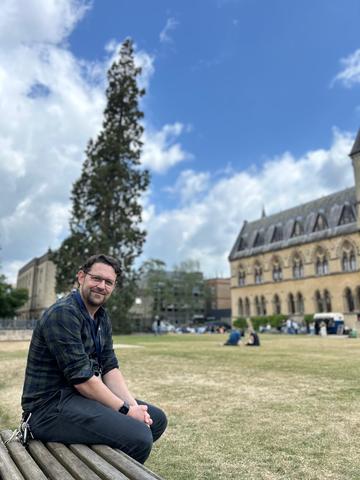
Because the weather is fair, we meet outside the Natural History Museum, obtaining coffees from the Horsebox Coffee Company, a popular concession. Sitting by Parks Road, Keble’s fancy bricks winking at us across the road and the University’s newest college, Reuben, behind us, we sit down to talk about trees. Right there on the verge next to us is a recently planted tulip tree, next to it a pin oak. Both are within four-pillar wooden frames, Sam noting that wood is a much nicer aesthetic and more sustainable than metal.
Responsible for over 6,000 trees, a third of them in the University Parks and the rest scattered across the grounds of academic departments, Sam Prior is the University’s arboricultural manager.
He manages a team of arborists and between them they water and protect all new plantings for three years, survey and monitor all trees, occasionally intervening to trim, reduce or, in extremis, fell trees.
The tree that commands our initial discussion is the impossible-to-miss Wellingtonia (Sequoiadendron giganteum), situated right in front of the Natural History Museum. (see right)
It’s fair to say that this particular tree has absorbed more than its fair share of Sam’s time since joining the University just over three years ago.
In that time, he has extended the railing exclusion zone around the tree’s base by two metres in all directions, to grant the roots more breathing space. ‘The issue is soil compaction from numerous people walking on it. That denies the root system access to water and nutrients.’
But that’s just the start of it. Now at 39 metres tall, the tree has exceeded the roof top of the adjacent museum by two metres, and lightning is a primary cause of damage to sequoias. So, a specialist company was drafted in to attach an aluminium lightning conductor to the top of the tree. ‘It connects to copper that runs right down the tree trunk to the earth, out to a pit and down into the earth several metres. Any lightning strike is going to dissipate deep into the earth via a grounding rod.’
That all sounds simple, but it is not. Digging the trench for the cabling from the tree base to the rod, required another specialist contractor who dug a neat trench using a vacuum extraction process that sucks out the earth, thereby avoiding mechanical damage to roots that might have occurred from digging with tools.
Sam says a big storm created the appearance of a tiny fracture across the root plate, requiring the conduct of a static pull test to see how strong the tree is. ‘Basically, they simulated storm force 12, and the model concluded that the tree has a high factor of safety.’
Planted in the 1860s, this Wellingtonia is barely out of its arboreal nappies at approximately 160 years. In North America it would be expected to grow for the next two millennia, possibly reaching 100 metres in height. ‘But here on its own in Oxford, we don’t know what to expect.’
The tallest tree in central Oxford, the Wellingtonia has become a living monument as well as beautiful exhibit of the Natural History Museum.
We turn to the brilliant restoration of elm trees that Sam has led in nearby South Parks Road, which we walk to. Once again, half the story is not about trees exactly. ‘It took over a year of planning to plant these trees, because of the underground services here. Immediately in the vicinity of so many laboratories and science buildings, it is immensely complex.’
There used to be magnificent elm trees on nearby Parks Road, all victims of Dutch elm disease in the latter part of the last century. Replacing them has become possible because of the development of a disease resistant variety ‘Rebona’ (Ulmus) by a German company.
‘This does not, unfortunately, presage a great big natural repopulation of elms, because these cultivars are hybrids whose seeds are often infertile.’

As well as five elms (see left), Sam’s team has this year also replanted South Parks Road with five silver-leaved limes (Tilia tormentosa ‘Brabant’) and a brace of wild service trees (Sorbus torminalis). Planted in January 2025, they have already put on a foot of growth and look to be in excellent health.
The dominant species of tree already established on the road is the lime tree, and before the science buildings were erected it was in fact the perimeter of the original University Parks.
Strolling into the University Parks at the point where they almost touch the entrance to Linacre College, we’re into a wonderland of exotic trees and stunning flowerbeds strewn with giant alliums, yet the walk we are on is called Thorn Walk and it features over 30 types of hawthorns, perhaps less spectacular than other trees here, yet an important, remarkable feature of the park. (below, right)
‘We have a local expert who is helping us to identify the different taxa of thorn.’
‘If you buy hawthorn commercially, there are two types that are widely sold, perhaps two more if you are willing to search out specialist suppliers.’
‘The plan is to complete a survey of the thorns, to know what we’ve got and what can be cultivated anew, we would also like to add more unusual varieties to the collection.’

Further into the Parks, Sam points out a ring of elms replanted as a gesture to the 136 that were recorded in 1936, all later killed by Dutch Elm Disease.
Then we are near the footpath through to Lady Margaret Hall and pause at the base of Sam’s favourite tree, the Caucasian elm, Zelkova carpinifolia, very tight, up-sweeping limbs tightly formed and smooth-barked, beautiful green leaves shaped like lozenges with curved teeth edges.
Originally from the Caucasus, he explains that this one is a ‘James Gordon’. This form was propagated in East London in 1760, and is now found throughout Western Europe, its cultivated form being distinctly different from its native growth habit.
This specimen – which is worth looking up if you are in the Parks – is, explains Sam, a ‘national champion’ because it sweeps 35 metres into the firmament and has multiple stems, definitely ‘best in class’, the tree equivalent to a Crufts-winning dog. Due to where it comes from historically – Georgia, Armenia, Iran – it is also resilient to drought and heat so it is a tree we might see more of in the future. *See end note about trees you could plant yourselves to be climate resilient, Caucasian elms not being easy to source.
Sam then shows me a touch screen field device where he can look up any tree in the park, immediately bringing to bear a trove of information. In the scheme of things Sam would ideally like the University Parks to attain arboretum status because it complements the collection at Harcourt Arboretum, also owned and managed by the University. Sam reports that the data collection is complete on all 1,900 trees in the Parks.
‘The goal is to develop a public-facing version of this software, so that anyone can look up a tree they are standing by and find out all about it.’
He says that there was a booklet guide to trees and shrubs in the University Parks published in the 1950s and later re-published in the 1970s. The benefit is that we can still consult them, but the weakness of a printed document is that it is a snapshot, quickly out of date. The new goal is to develop a living document so that the rolling survey of trees that Sam’s team conducts will mean up-to-date information at any point going forwards.
He has also cultivated a wildflower meadow in the centre of the Parks, which we walk. It is completely unobtrusive and in no sense walled off from the public. This project has been ongoing for over two years and has involved hand seeding of yellow rattle (Rhinanthus minor) and planting over 1,000 plug plants of 16 different species. The project has been achieved with the assistance of the Long Mead Foundation supporting the needs of adults with learning difficulties and autism by offering nature-based activities.
Back to trees and Sam says his second and third favourites are, respectively, the bee-bee tree from Korea (Tetradium daniellii), and the Japanese pagoda tree at Keble Gate (Styphnolobium japonicum). The first, he cites for its ‘beautiful white flowers in late summer’, the second for its rich green pinnate leaves and ‘creamy white flowers’.
An arborist for 20 years both locally and in New Zealand, yet born in Oxford and raised in nearby East Challow, near Wantage, Sam has the perfect balance between local and global, his previous role for the City Council where he was responsible for the welfare of approximately 150,000 trees.
With two daughters aged five and eight, he says he has been watching how they interact with nature, especially the youngest. It has led him to think that his role at Oxford could involve more outreach.
‘I mean to conduct a bat survey [in the Parks], but I also wonder if this could be done in a group or with other participants, because it’s a popular activity…’

We approach a tree that is almost spectral in its bright whiteness, devoid of leaves and draped in pale filaments as if it’s fallen out of a ghost movie.
‘It’s a bird cherry covered in ermine moths,’ he says (see right).
Some members of the public have been questioning why we don’t fell it quickly, get rid of the infestation, he says. ‘So, we have put a QR-coded sign at its base to explain what’s going on.’
‘Basically, ermine moths have evolved alongside this species of tree. Our theory this year is that with the dry conditions we’ve had [spring 2025], the moths did very well. Normal rainfall reduces their numbers and maintains a better equilibrium.’
It’s not clear whether the tree is dead or whether it might still rejuvenate, so for now the base is roped off and it has become a slightly exotic, slightly concerning exhibit.
The palpable sense of history defines Oxford. ‘We’re custodians. I want to improve the quality and public accessibility of the Oxford estate, the public interest and respect for trees.’
Unlike the University generally, the University Parks is not ancient but Victorian, and it is open to the public whenever it is open. It was from the start a shared treasure of the University, allowing local people access to recreation, sports, plant biology and research into the natural world.
There is a sense of permanence with trees, they are detached from the stresses of the modern technological world. You can touch a tree; it operates to a different life cycle and will likely outlive all of us. A calming truth that in many ways defines the University too, where overlapping communities of college and department are set up for the benefit of future generations as well as current ones.
The University Parks has its own website.
There is a Parks newsletter that alumni can sign up to: University Parks Newsletter | University Parks
There are other ways to support the Parks: Support University Parks | University Parks
The University Parks has accounts on Instagram, X and Facebook.
Trees to consider with climate change in mind:
Sam says:
‘In terms of the Caucasian Elm, I would love to plant more of them but they are very much a massive tree and difficult to source (I can only find one supplier in the Netherlands that sells them now). There are many more climate resilient trees to plant that don’t quite grow to the same dimensions such as Sorbus torminalis (wild service tree), Gleditsia triacanthos (honey locust), Acer monspessulanum (Montpellier maple) or Heptacodium miconioides (seven-son flower) as good medium-sized examples tolerant to drought.’
Picture credits: Lead portrait and feature images: University of Oxford/Richard Lofthouse. Picture of the ermine moths: Sam Prior.


